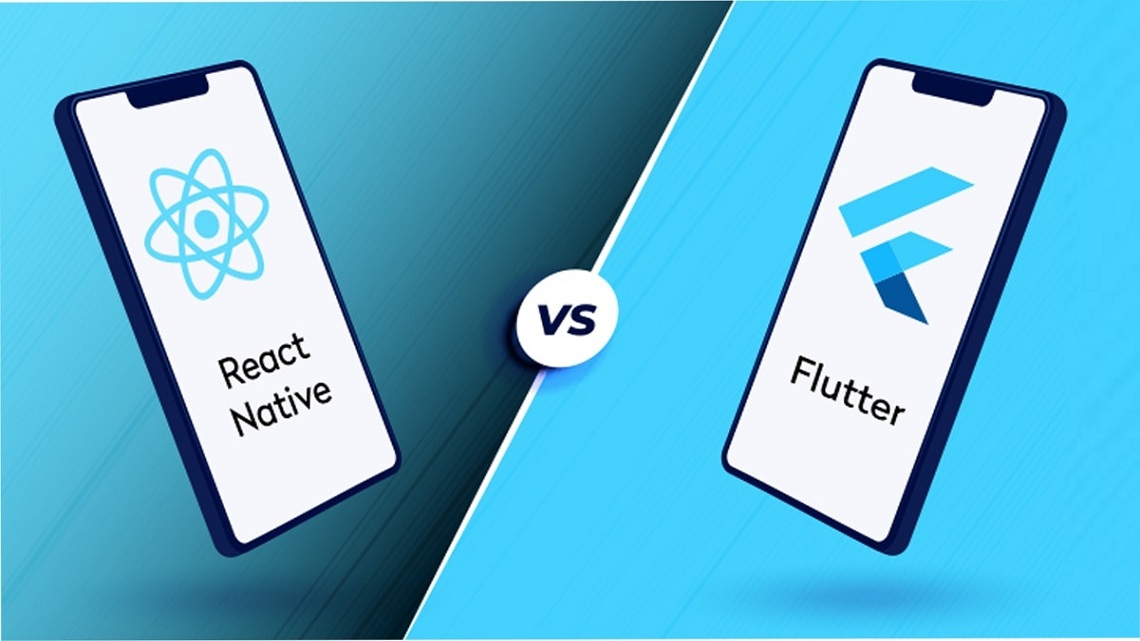Universality reigns supreme in the early third millennium’s deeply globalised globe. Companies strive to provide goods that cater to the tastes of the broadest possible target audience, attempting to satisfy the needs of each potential client halfway. The current IT industry is no exception. Businesses want to expand their contact, so they put pressure on application developers to produce solutions that could reach all customers, regardless of whether they reach them through a desktop or a mobile device.
If the latter is the case, such items should be offered to both major factions of modern smartphone users: those who prefer iOS-powered smartphones and those who prefer Android-based devices. This article compares and contrasts Flutter and React Native.With the introduction of cross-platform software development, the problem of repairing the infamous operating system rift was solved. It allows for the development of cross-platform programmes with a decent user experience for all consumers.
Cordova, Ionic, Xamarin, Unity, and other frameworks are part of the modern IT tech stack. As a result, deciding between the available options is relatively simple. However, after a decade of providing cross-platform development services, we’d like to focus on the Flutter vs. React Native debate.
Even if you just have two options, you should understand the differences between Flutter and React Native. This article would assist you in determining if Flutter or React Native is the best choice for your project.Let’s take a peek at the Flutter vs. React Native clash in 2021. Let’s take a peek at the Flutter vs. React Native clash in 2022.
Table of Contents
What Exactly is Flutter?
Flutter is a Google-developed open-source framework for designing and producing native Android and iOS applications that was officially published in December 2018. This platform blends development ease with utility while maintaining an uniform style. Flutter is a free and open-source platform that uses the Dart programming language to replace Javascript. Flutter allows businesses to create cross-platform apps with a single codebase, allowing them to create a single programme that works on desktop, mobile, and the web. Flutter-based apps are more intuitive and easier to utilize, making them a popular choice for companies like eBay, Alibaba, Google Assistant, and eBay that require a broad basis.
How Does Flutter Work?
A foundation library, flutter engine, and widgets make up Flutter’s framework. Flutter’s method to application development is distinctive in that it employs declarative UI writing, which allows you to start at the beginning and work your way to the end. As a result, before starting to build any piece, the user must have a clear understanding of what type of user interface it will be. A set of widgets could be used by developers to create a comprehensive user interface. Flutter allows developers to create unique widgets that may be coupled with existing ones. Flutter now provides a number of software packages that provide users access to Firebase and Redux data warehouses, enhancing application capabilities and improving the user experience.
What is React Native?
React Native is a popular javascript-based mobile framework that lets developers create natively rendered Android and iOS apps using the same codebase. Facebook made it an open-source project in 2015. With Walmart, Instagram, Facebook, SoundCloud, and Skype among the most well-known examples, react-native has risen to popularity as one of the most popular mobile app development frameworks in just a few years. Because companies just have to write code once, they save a lot of time and money.
How Does React Native Work?
React native combines Javascript and JXL (unique code resemblant XML). This architecture allows you to deal with native application threads as well as Javascript-based threads. This cross-platform development tool’s code does not generate web views. Components and native perspectives are used instead. By connecting javascript and native threads, React-native enables bi-directional communication.
Comparison of Flutter and React Native
Flutter and React Native are compared below based on the following criteria: ecosystem, performance, and documentation availability.
Comparison of Ecosystems
React Native is developed enough that most, if not all, major editors support it. When it comes to packages, React Native comes out on top because it has significantly more than Flutter, albeit quantity does not always imply quality. It additionally enables Hot Reload, which enhances the development experience significantly.
Flutter is clearly behind React Native, which was released two years before Flutter. Flutter, on the other hand, is swiftly catching up, and several critical packages are currently available for public usage.
Support And Dependability
Both frameworks established by the world’s two most powerful IT firms are open-source platforms with non-exclusive licences. Flutter is a fundamental framework that is unaffected by operating system improvements. In the event of system changes, React Native is mostly reliant on native components for extra adoption efforts. However, because it is a necessary tradeoff for a native app experience, this isn’t considered particularly a drawback of React Native.
Cost
The relationship between supply and demand is closely intertwined. Because React Native’s framework is based on Javascript, which several developers are familiar with, it’s easy to hire a skilled developer. Despite the fact that Flutter developers are less expensive, locating one in your neighbourhood may prove difficult. Younger developers are more likely to have it than older, more experienced developers.
Scalability
When comparing Flutter vs. React Native, Flutter outperforms React Native in terms of performance, scalability, development costs, app functionalities, and more. Even yet, when it comes to building a well-performing mobile app, React Native shines out.
Conclusion
Flutter and React Native are both cross-platform, which helps to shorten time to market. They’re both good for cross-platform app development and come with a lot of third-party libraries and ready-to-use components to help speed up the process even further.
However, because each application is unique, it’s always a good idea to talk over your plans with a seasoned development team. They will examine your business needs and make recommendations for different techniques.


